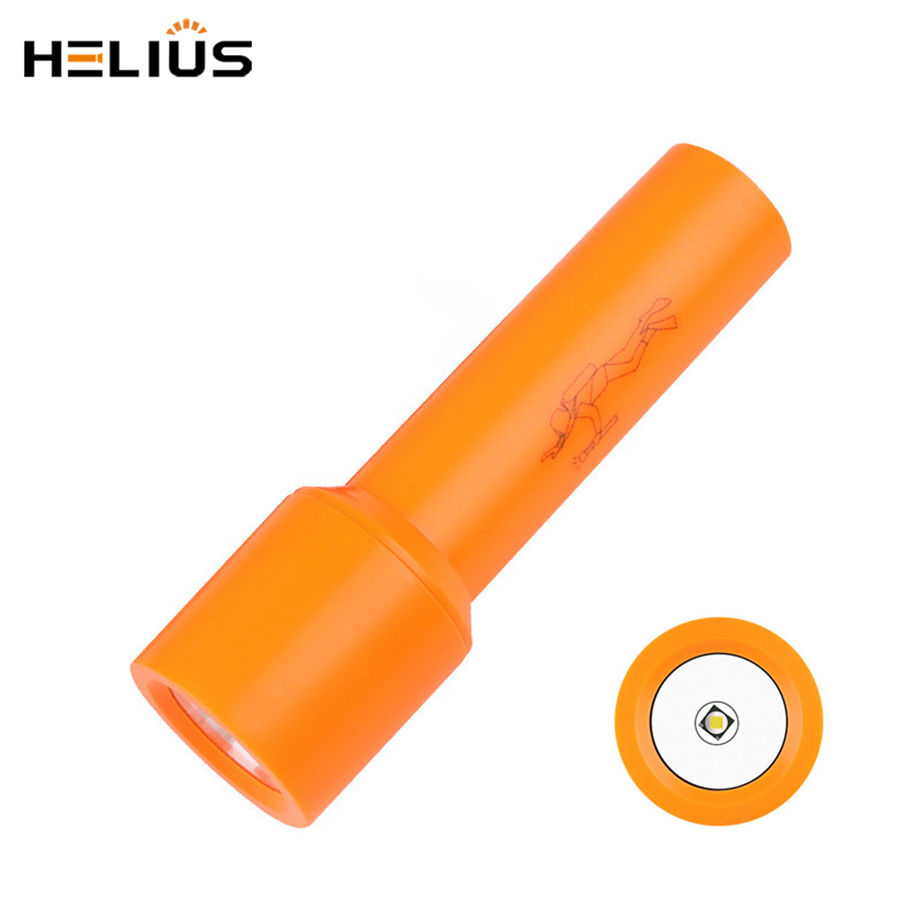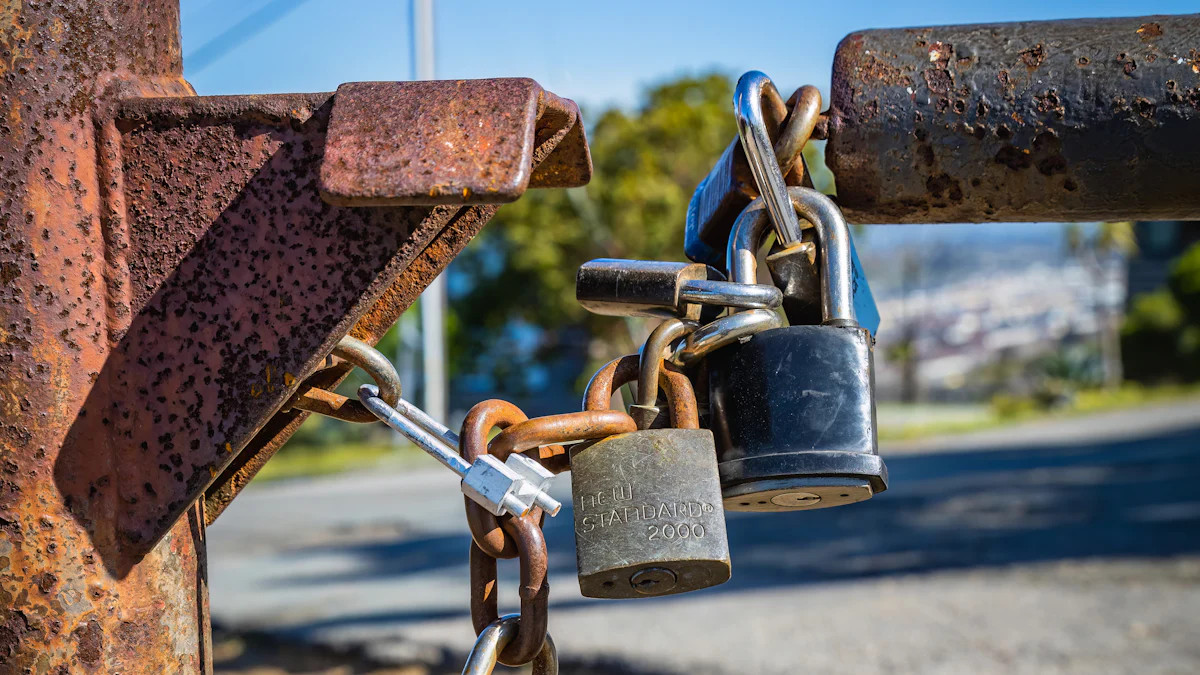Top Features to Look for When Sourcing Flashlights for Construction Sites

Construction sites demand reliable lighting to ensure safety and efficiency, making it crucial to understand the top features to look for when sourcing flashlights for construction sites. A flashlight becomes your essential tool when working in dim or dark conditions. Superior brightness improves visibility, helping you identify hazards and avoid accidents. LED flashlights, for instance, offer energy efficiency and long lifespans, reducing costs and maintenance. They also emit less heat, creating a more comfortable work environment. Choosing the right flashlight with these top features ensures you can handle harsh conditions while maintaining productivity. A recommended flashlight with durable features and consistent lighting can make nighttime tasks safer and more manageable.
Key Takeaways
Pick a flashlight with 300 lumens for basic tasks. For harder jobs, choose one with 1,000 lumens or more for better light.
Get flashlights made from strong materials like aluminum. These can handle drops and tough conditions, making them reliable.
Choose a flashlight with waterproof ratings like IPX6 or IPX7. This helps it work in heavy rain or if it gets wet.
Use rechargeable batteries for longer use. They save money and are better for the environment, perfect for daily use.
Go for lightweight and easy-to-hold designs. These make it more comfortable and less tiring to use for hours.
Brightness and Beam Distance

When choosing a flashlight for construction work, brightness and beam distance are two critical factors. These features determine how well you can see in low-light conditions and how far the light can reach. A high-performance flashlight with the right brightness and beam settings ensures you can work efficiently and safely, even in the darkest environments.
Lumens and Brightness Levels
Lumens measure the total amount of light a flashlight produces. A higher lumen count means brighter light. For construction sites, you need a flashlight with at least 300 lumens for general tasks. However, for more demanding jobs, such as inspecting distant areas or working in pitch-black conditions, you may require 1,000 lumens or more.
The best LED flashlight options often come with adjustable brightness levels. This feature allows you to switch between low, medium, and high settings based on your needs. For instance, a lower brightness level can conserve battery life during routine tasks, while a higher setting provides maximum illumination for critical work.
Beam Distance and Adjustable Focus
Beam distance refers to how far the light from your flashlight can travel. A flashlight with a long beam distance is essential for spotting hazards or objects at a distance. For construction sites, a beam distance of at least 100 meters is ideal.
Adjustable focus is another valuable feature. It lets you switch between a wide floodlight for close-up tasks and a focused spotlight for long-range visibility. The best LED flashlight models often include this functionality, giving you greater control over your lighting. This versatility ensures you can adapt to various work scenarios without needing multiple flashlights.
Tip: Always test the beam distance and focus settings before purchasing a flashlight to ensure they meet your specific requirements.
Durability and Resistance

When working on construction sites, you need a flashlight that can handle tough conditions. Durability ensures your flashlight remains reliable even after exposure to impacts, water, or extreme weather.
Impact Resistance for Harsh Conditions
Construction sites often involve rough handling and accidental drops. A flashlight with impact resistance can withstand these challenges without breaking. Look for models made from durable materials like aluminum or stainless steel. These materials enhance the flashlight's robustness, making it a durable light source for demanding environments.
Shockproof designs also play a vital role. They protect internal components from damage caused by sudden impacts. Additionally, flashlights with resistance to extreme temperatures perform reliably in both hot and cold weather. This feature is essential when working outdoors or in unpredictable environments.
Tip: Choose a flashlight with durable construction to ensure it lasts through the toughest conditions.
Waterproof and Weatherproof Ratings
Construction sites often expose you to rain, mud, or even accidental water submersion. A flashlight with waterproof and weatherproof ratings ensures uninterrupted performance in such scenarios. The most common ratings include:
IPX5: Protects against low-pressure water jets, suitable for light rain or splashes.
IPX6: Handles powerful water jets, ideal for heavy rain or wet conditions.
IPX7: Survives submersion in water up to 1 meter for 30 minutes, perfect for accidental drops in puddles.
IPX8: Designed for continuous immersion beyond 1 meter, suitable for prolonged underwater use.
For construction work, an IPX6 or IPX7 rating is often sufficient. These ratings ensure your flashlight remains functional even in challenging weather.
Note: Always check the waterproof rating before purchasing to match it with your work environment.
A flashlight with durable construction and the right waterproof rating guarantees reliability, no matter the conditions.
Battery Type and Runtime
Choosing the right battery type and ensuring sufficient runtime are crucial when selecting a flashlight for construction sites. These factors directly impact how long your flashlight performs and how convenient it is to maintain.
Rechargeable vs Disposable Batteries
The choice between rechargeable and disposable batteries depends on your specific needs. Rechargeable batteries offer several advantages:
They provide longer battery life, ensuring consistent brightness for extended periods.
They are cost-effective over time since you can recharge them hundreds or even thousands of times.
They are environmentally friendly, reducing waste and minimizing harmful chemical contamination.
Many rechargeable flashlights, such as a high output rechargeable flashlight, include energy-saving features like adjustable brightness settings.
However, rechargeable batteries also come with some drawbacks. They have a higher initial cost and require an external power source for recharging. You may also need to purchase additional accessories, such as chargers, which adds to the expense. Additionally, rechargeable batteries tend to self-discharge more quickly than disposable ones.
Disposable batteries, on the other hand, are convenient and readily available. They are ideal for situations where recharging is not feasible. However, they generate more waste and can become costly over time if used frequently.
Tip: If you work in remote areas or need a flashlight with high power consumption, rechargeable batteries are a better long-term investment.
Long Runtime and Battery Indicators
A flashlight with a long runtime ensures uninterrupted performance during extended work hours. Look for models that balance brightness and battery life effectively. Flashlights with energy-efficient LED technology often provide longer runtimes without compromising on illumination.
Battery indicators are another essential feature. These indicators let you monitor the remaining charge, helping you avoid unexpected power loss. Some flashlights include multi-color LED indicators or digital displays to show battery levels clearly. This feature allows you to plan recharges or battery replacements in advance, ensuring your flashlight remains operational when you need it most.
Note: Always check the runtime specifications and battery indicator features before purchasing a flashlight. These details ensure you select a model that meets your work demands.
By understanding battery types and prioritizing long runtime, you can choose a flashlight that delivers consistent performance and durability for your construction site needs.
Size, Weight, and Portability
When working on a construction site, the size, weight, and portability of your flashlight play a significant role in its usability. A well-designed flashlight ensures you can carry it easily and use it for extended periods without discomfort.
Compact vs Full-Sized Portable Construction Lights
You need to decide between compact and full-sized portable construction lights based on your specific tasks. Compact flashlights are small and easy to carry. They fit in your pocket or tool belt, making them ideal for quick inspections or tasks requiring mobility. These models often weigh less, reducing strain during prolonged use.
Full-sized portable construction lights, on the other hand, provide more powerful illumination. They are better suited for large-scale projects or areas requiring extensive lighting. These lights often include additional features like adjustable stands or handles, enhancing their versatility. However, their larger size may make them less convenient to carry around.
Tip: Choose compact flashlights for mobility and full-sized portable construction lights for stationary tasks requiring high brightness.
Lightweight Designs for Prolonged Use
A lightweight flashlight reduces fatigue during long work hours. Construction tasks often require holding a flashlight for extended periods, and a heavy model can cause discomfort. Lightweight designs, especially those made from durable materials like aluminum, strike a balance between strength and ease of use.
Flashlights with ergonomic grips further enhance comfort. Anti-slip designs ensure a secure hold, even in wet or greasy conditions. This feature is particularly useful when working in challenging environments.
Note: Always test the weight and grip of a flashlight before purchasing. A lightweight and ergonomic design improves both comfort and efficiency.
By prioritizing size, weight, and portability, you can select a flashlight that meets your needs without compromising on durability or performance.
Construction Material and Build Quality
Aluminum vs Plastic Flashlight Bodies
The material of your flashlight plays a significant role in its performance and longevity. Aluminum and plastic are two common materials used in flashlight construction, each offering unique benefits.
Aluminum flashlights are known for their exceptional durability. This material resists impacts and harsh conditions, making it ideal for demanding construction environments. Aluminum also provides a lightweight yet sturdy build, ensuring your flashlight can handle rugged use without adding unnecessary weight. Stainless steel, another durable option, offers similar robustness but tends to be heavier. Both materials ensure your flashlight lasts longer, even in tough outdoor conditions.
Plastic flashlights, on the other hand, are lightweight and often more affordable. They work well for light-duty tasks or as backup options. However, plastic lacks the strength of aluminum and may not withstand heavy impacts or extreme weather as effectively. If you prioritize durability and long-term quality, aluminum is the better choice for construction sites.
Tip: Choose aluminum flashlights for heavy-duty tasks and plastic ones for occasional or less demanding use.
Ergonomic and Anti-Slip Designs
Comfort and grip are essential when selecting a flashlight for construction work. An ergonomic design ensures you can hold and operate the flashlight comfortably during long hours. Look for models with contoured shapes that fit naturally in your hand. This feature reduces strain and enhances usability.
Anti-slip designs add another layer of practicality. Flashlights with textured grips or rubber coatings prevent slipping, even in wet or greasy conditions. This feature is especially useful when working in challenging environments where maintaining a secure hold is critical.
Some flashlights also include wrist straps or clips for added convenience. These features allow you to keep your flashlight within reach while freeing up your hands for other tasks. By prioritizing ergonomic and anti-slip designs, you can improve both comfort and efficiency on the job.
Note: Always test the grip and comfort of a flashlight before purchasing to ensure it meets your needs.
Additional Features to Look For
Adjustable Beams and Multiple Modes
A flashlight with adjustable beams and multiple modes offers versatility for construction tasks. Adjustable beams allow you to switch between a wide floodlight for close-range work and a focused spotlight for long-distance visibility. This flexibility ensures you can adapt to different lighting needs without carrying multiple tools.
Multiple modes, such as high, medium, low, and strobe, enhance functionality. High mode provides maximum brightness for critical tasks, while low mode conserves battery life during routine work. Strobe mode can serve as a signaling tool in emergencies. These features make your flashlight more than just a light source—it becomes a multi-purpose tool for various scenarios.
Tip: Look for flashlights with intuitive controls for switching between modes. This ensures quick adjustments during work.
Hands-Free Options for Convenience
Hands-free flashlights improve safety and efficiency on construction sites. Wearable designs, such as headlamps, free up your hands for operating tools or climbing ladders. These flashlights often feature adjustable beams, ensuring you can direct light exactly where needed. Rechargeable batteries in these models reduce long-term costs and promote sustainability.
Some flashlights integrate directly into safety gear. For example, built-in LEDs in safety vests or work shoes enhance visibility in the direction of movement. This integration reduces the need for carrying extra equipment, streamlining your workflow. Ergonomic designs and durable materials ensure these flashlights remain comfortable and reliable during extended use.
Note: Hands-free options are ideal for tasks requiring precision or mobility, such as electrical work or inspections.
Safety Features for Emergency Situations
Safety features in a flashlight are essential for emergencies. Models with certifications for hazardous locations ensure compliance with industry standards. Rugged construction enhances durability, allowing the flashlight to withstand drops, water exposure, or contact with chemicals.
High-lumen output provides bright illumination in low-light conditions, while energy-efficient technology extends battery life. Compact designs make these flashlights easy to carry, ensuring they are accessible during emergencies. Some models also include strobe or SOS modes for signaling in critical situations.
Tip: Choose a flashlight with a combination of high brightness, long runtime, and rugged construction to handle unexpected challenges effectively.
Selecting the right flashlight for construction sites ensures safety and efficiency. You should focus on the top features to look for when sourcing flashlights for construction sites, such as brightness, durability, and battery life. Matching these features to your specific needs guarantees reliable performance in demanding environments. A recommended flashlight with high-quality materials and advanced functionality can withstand harsh conditions while providing consistent illumination. Investing in the right flashlight not only enhances productivity but also ensures a safer work environment for you and your team.
FAQ
What is the ideal brightness level for construction site flashlights?
You should choose a flashlight with at least 300 lumens for general tasks. For demanding jobs, such as inspecting distant areas or working in complete darkness, select a flashlight with 1,000 lumens or more for optimal visibility.
How do I know if a flashlight is waterproof?
Check the IP rating on the flashlight. For construction sites, an IPX6 or IPX7 rating works best. These ratings ensure the flashlight can handle heavy rain or accidental submersion in water, keeping it functional in wet conditions.
Are rechargeable batteries better than disposable ones?
Rechargeable batteries save money over time and reduce waste. They work well for frequent use. Disposable batteries are better for occasional use or when recharging isn’t possible. Choose based on your work environment and how often you use the flashlight.
What makes a flashlight durable for construction work?
Durable flashlights use materials like aluminum or stainless steel. These materials resist impacts and harsh conditions. Look for models with shockproof designs and weatherproof ratings to ensure they last in tough environments.
Why are hands-free flashlights useful on construction sites?
Hands-free flashlights, like headlamps, let you work safely and efficiently. They free up your hands for tools or climbing. These flashlights also provide adjustable beams, ensuring light focuses exactly where you need it during tasks.
Tip: Consider hands-free options for tasks requiring precision or mobility, such as electrical work or inspections.
See Also
Essential Advice for Finding Quality Wholesale Flashlights
Five Key Tips for Selecting Ideal Flashlights or Headlamps
A Complete Guide to Selecting Your Ideal Flashlight Supplier
